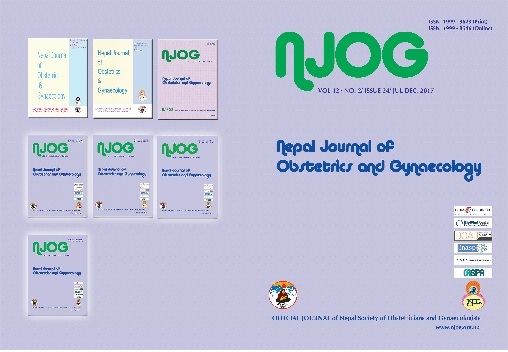Repeat Spinal Anaesthesia for Caesarean section: An Experience at Paropakar Maternity and Women’s Hospital
Keywords:
caesarean section, failed spinal, repeat spinalAbstract
Aims: This study aims to review the haemodynamic effects of the repeat spinal anaesthesia and to identify the different doses of Bupivacaine heavy used for the repeat spinal anaesthesia for the failed spinal in caesarean section.
Methods: This study was conducted by reviewing medical anaesthesia records of the cases of the repeat spinal anesthesia regarding any adverse haemodynamic effects. The second dose of bupivacaine heavy, maximum sensory blockade and intraoperative events like bradycardia, hypotension, high spinal, nausea vomiting, conversion to general anaesthesia and inadequate block were also reviewed.
Results: Out of 8040 caesarean section under subarachnoid block, 51(0.63%) cases were conducted under repeat spinal anaesthesia from April 2014 to December2016. All the cases had complete spinal failure with no sensory and motor effects even after 10 minutes of the intrathecal injection. The second dose of bupivacaine heavy used was variable but reduced than the first dose. The most common adverse effect was hypotension (27.5%). 50% of cases were uneventful. One case was converted to general anaesthesia even after repeat spinal anaesthesia and 9.8% cases had high spinal above T4.
Conclusions: Repeat administration of Bupivacaine heavy in reduced dose and volume can be used in complete failure of administration of first spinal anaesthesia. However, it always requires careful assessment and the judicious monitoring.
Downloads
Downloads
Published
How to Cite
Issue
Section
License
Copyright on any research article in the Nepal Journal of Obstetrics and Gynaecology is retained by the author(s).
The authors grant the Nepal Journal of Obstetrics and Gynaecology a license to publish the article and identify itself as the original publisher.
Articles in the Nepal Journal of Obstetrics and Gynaecology are Open Access articles published under the Creative Commons CC BY-NC License (https://creativecommons.org/licenses/by-nc/4.0/)
This license permits use, distribution and reproduction in any medium, provided the original work is properly cited, and it is not used for commercial purposes.



